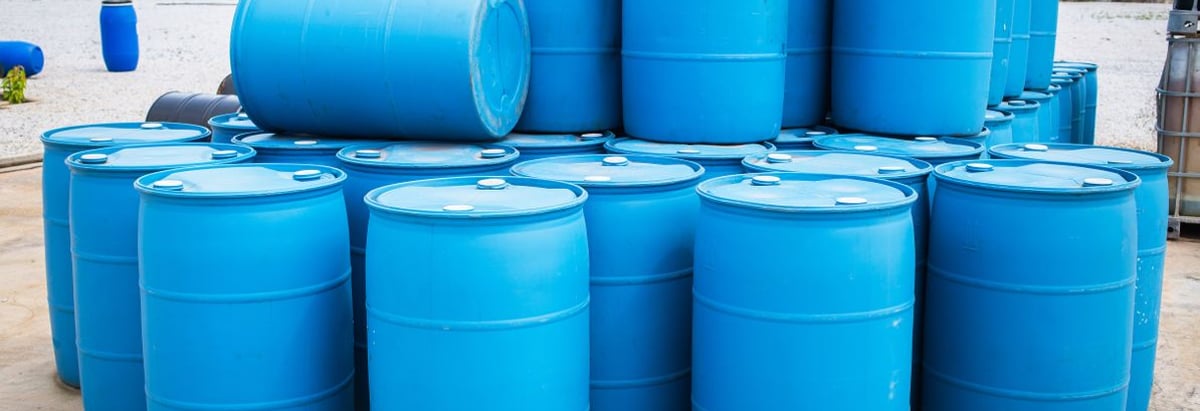Stock Analysis
These 4 Measures Indicate That Everest Kanto Cylinder (NSE:EKC) Is Using Debt Reasonably Well

Howard Marks put it nicely when he said that, rather than worrying about share price volatility, 'The possibility of permanent loss is the risk I worry about... and every practical investor I know worries about.' So it might be obvious that you need to consider debt, when you think about how risky any given stock is, because too much debt can sink a company. Importantly, Everest Kanto Cylinder Limited (NSE:EKC) does carry debt. But the more important question is: how much risk is that debt creating?
What Risk Does Debt Bring?
Generally speaking, debt only becomes a real problem when a company can't easily pay it off, either by raising capital or with its own cash flow. Ultimately, if the company can't fulfill its legal obligations to repay debt, shareholders could walk away with nothing. However, a more usual (but still expensive) situation is where a company must dilute shareholders at a cheap share price simply to get debt under control. By replacing dilution, though, debt can be an extremely good tool for businesses that need capital to invest in growth at high rates of return. The first step when considering a company's debt levels is to consider its cash and debt together.
Check out our latest analysis for Everest Kanto Cylinder
What Is Everest Kanto Cylinder's Debt?
The image below, which you can click on for greater detail, shows that Everest Kanto Cylinder had debt of ₹412.8m at the end of March 2024, a reduction from ₹957.1m over a year. But on the other hand it also has ₹1.32b in cash, leading to a ₹911.8m net cash position.
A Look At Everest Kanto Cylinder's Liabilities
We can see from the most recent balance sheet that Everest Kanto Cylinder had liabilities of ₹2.64b falling due within a year, and liabilities of ₹491.6m due beyond that. Offsetting these obligations, it had cash of ₹1.32b as well as receivables valued at ₹1.74b due within 12 months. So it has liabilities totalling ₹66.4m more than its cash and near-term receivables, combined.
This state of affairs indicates that Everest Kanto Cylinder's balance sheet looks quite solid, as its total liabilities are just about equal to its liquid assets. So while it's hard to imagine that the ₹18.4b company is struggling for cash, we still think it's worth monitoring its balance sheet. Despite its noteworthy liabilities, Everest Kanto Cylinder boasts net cash, so it's fair to say it does not have a heavy debt load!
Fortunately, Everest Kanto Cylinder grew its EBIT by 3.4% in the last year, making that debt load look even more manageable. There's no doubt that we learn most about debt from the balance sheet. But it is future earnings, more than anything, that will determine Everest Kanto Cylinder's ability to maintain a healthy balance sheet going forward. So if you want to see what the professionals think, you might find this free report on analyst profit forecasts to be interesting.
Finally, while the tax-man may adore accounting profits, lenders only accept cold hard cash. Everest Kanto Cylinder may have net cash on the balance sheet, but it is still interesting to look at how well the business converts its earnings before interest and tax (EBIT) to free cash flow, because that will influence both its need for, and its capacity to manage debt. In the last three years, Everest Kanto Cylinder's free cash flow amounted to 44% of its EBIT, less than we'd expect. That weak cash conversion makes it more difficult to handle indebtedness.
Summing Up
While it is always sensible to look at a company's total liabilities, it is very reassuring that Everest Kanto Cylinder has ₹911.8m in net cash. And it also grew its EBIT by 3.4% over the last year. So we don't have any problem with Everest Kanto Cylinder's use of debt. The balance sheet is clearly the area to focus on when you are analysing debt. But ultimately, every company can contain risks that exist outside of the balance sheet. Case in point: We've spotted 1 warning sign for Everest Kanto Cylinder you should be aware of.
If you're interested in investing in businesses that can grow profits without the burden of debt, then check out this free list of growing businesses that have net cash on the balance sheet.
Valuation is complex, but we're here to simplify it.
Discover if Everest Kanto Cylinder might be undervalued or overvalued with our detailed analysis, featuring fair value estimates, potential risks, dividends, insider trades, and its financial condition.
Access Free AnalysisHave feedback on this article? Concerned about the content? Get in touch with us directly. Alternatively, email editorial-team (at) simplywallst.com.
This article by Simply Wall St is general in nature. We provide commentary based on historical data and analyst forecasts only using an unbiased methodology and our articles are not intended to be financial advice. It does not constitute a recommendation to buy or sell any stock, and does not take account of your objectives, or your financial situation. We aim to bring you long-term focused analysis driven by fundamental data. Note that our analysis may not factor in the latest price-sensitive company announcements or qualitative material. Simply Wall St has no position in any stocks mentioned.
Have feedback on this article? Concerned about the content? Get in touch with us directly. Alternatively, email editorial-team@simplywallst.com
About NSEI:EKC
Everest Kanto Cylinder
Manufactures and sells cylinders in India.

